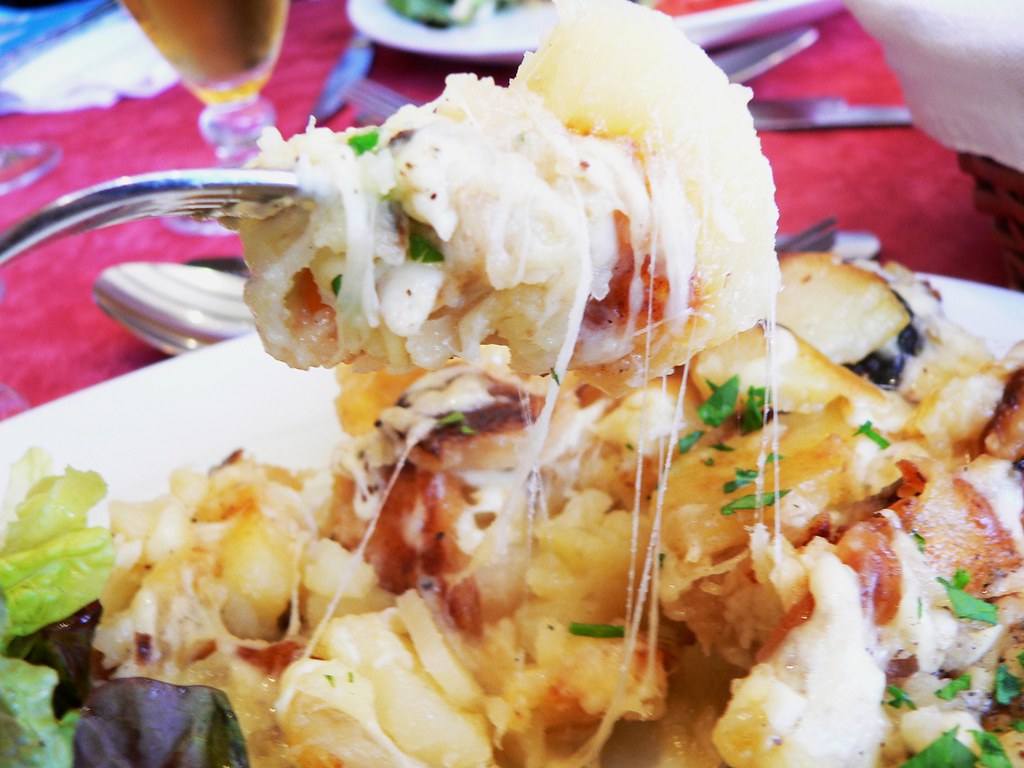While I tend at home to have a single cheese at a time to explore and really get to know it while it's in my fridge, for entertaining or in the restaurant the cheese platter is what the French call un incontournable.
There was a typical French cheese platter at my partner's sister-in-law's Christmas get-together in Paris - a Brie and a really oozing pale straw-coloured goat's cheese representing opposite ends of the classical spectrum, a Roquefort for 'something blue', a Caprice des Dieux for the children (sweet, white, creamy, inoffensive), and a couple of other cheeses to add some variety.
(It's a bit like the bridal dress. Something old and something new - say a 24 month Comté and a really young Selles-sur-Cher - true, nothing borrowed, but always something blue - Roquefort, or perhaps Fourme d'Ambert or Bleu d'Auvergne.
The Guardian has just put out a fascinating article on how to make up a well balanced cheese platter. Admittedly it's by Guardian Australia, so those of us currently sitting in brilliant sunshine and temperature of minus 5 with a hard frost on the ground can ignore the summer-orientated advice re stinky cheeses. But the rest is good; particularly the advice to take the cheese out of the fridge and let it warm up to release the aromas and flavour.
I also love the idea of pairing cheese with sweetness, such as Sienese panforte or dried apricots. Though I don't detest oat biscuits with cheese, particularly with some of the softer and stinkier.
For the Francophone, a nicely savage article proposes two alternative cheese platters, one horrific mass-produced nastiness, and one well composed classic cheeses. I'l summarise:
There was a typical French cheese platter at my partner's sister-in-law's Christmas get-together in Paris - a Brie and a really oozing pale straw-coloured goat's cheese representing opposite ends of the classical spectrum, a Roquefort for 'something blue', a Caprice des Dieux for the children (sweet, white, creamy, inoffensive), and a couple of other cheeses to add some variety.
(It's a bit like the bridal dress. Something old and something new - say a 24 month Comté and a really young Selles-sur-Cher - true, nothing borrowed, but always something blue - Roquefort, or perhaps Fourme d'Ambert or Bleu d'Auvergne.
The Guardian has just put out a fascinating article on how to make up a well balanced cheese platter. Admittedly it's by Guardian Australia, so those of us currently sitting in brilliant sunshine and temperature of minus 5 with a hard frost on the ground can ignore the summer-orientated advice re stinky cheeses. But the rest is good; particularly the advice to take the cheese out of the fridge and let it warm up to release the aromas and flavour.
I also love the idea of pairing cheese with sweetness, such as Sienese panforte or dried apricots. Though I don't detest oat biscuits with cheese, particularly with some of the softer and stinkier.
For the Francophone, a nicely savage article proposes two alternative cheese platters, one horrific mass-produced nastiness, and one well composed classic cheeses. I'l summarise:
- If it's wrapped in aluminium or comes in mini-portions all individually wrapped, avoid. (The French haven't yet sunk to the all-time lows of pre-sliced cheese, thank the Lord.)
- You need a soft cheese (Camembert, Brie, Coulommier), a hard cooked cheese (Comté, Gruyere, Emmenthal) and a hard raw cheese (Tomme, Cantal, Saint-Nectaire), a "pas vache" (which might be goat's cheese or sheep's milk cheese), a blue cheese and last but not least, a stinky cheese.
- >Preferred stinky cheeses? Munster, Langres, Pont l'Eveque and Epoisse I know well - Chablis and Vieux Boulogne are gaps in my cheese knowledge that I need to make good in 2015!
- >Buy 'fromage fermier' from a small producer if you can.

